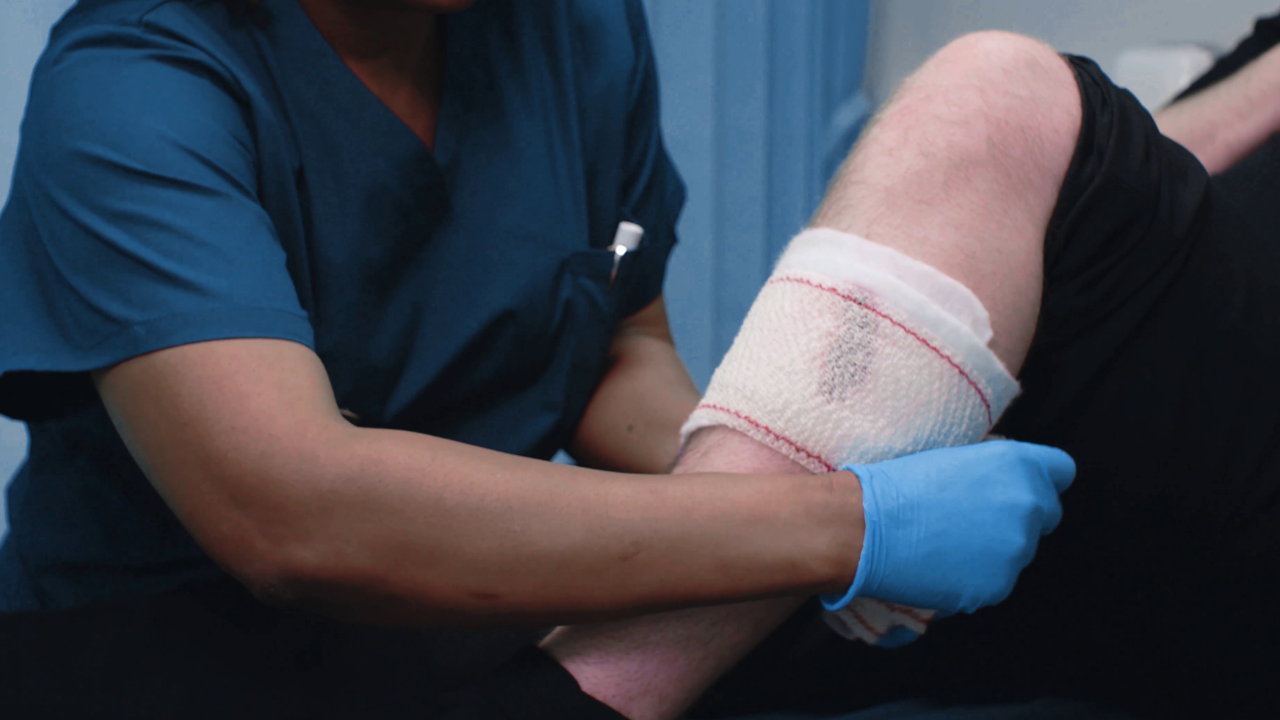September 17, 2020
2m 53s
Share:
Hyperoxia triggered by Hyperbaric Oxygenation Treatment (HBOT) generates a series of physiological effects that produce multiple benefits. Among them, the regeneration of tissues and the consequent acceleration in the healing processes of different types of wounds.
This treatment promotes angiogenesis and vasculogenesis, increases collagen synthesis, and the release of pluripotent stem cells. As a consequence, it favors tissue repair, and therefore it is indicated in acute and chronic complex wounds.
HBOT also decreases inflammation and has activity against the antimicrobial biofilm, reducing the bacterial load in infected wounds and necrotizing infections. In addition, it inhibits some bacterial toxins and contributes to infection control as an adjunct therapy to surgical and antimicrobial treatment in severe necrotizing infections. HBOT promotes osteogenesis and osseointegration, increases oxygenation of bone tissue, and favors the recovery of chronic wounds with bone compromise or osteomyelitis.
Hyperbaric oxygen attenuates fibrosis. This makes it useful in radium-induced skin syndrome and other radiation injuries. In wounds that present with intense pain, it achieves significant analgesia due to its effect on peripheral axonal regeneration, the reduction of nitric oxide synthase, and the promotion of autophagy of damaged mitochondria. In addition, it helps to improve neuropathy and could prevent microangiopathy associated with vascular ulcers.
In addition to reducing inflammation, tissue oxygenation modulates the immune system. It accelerates healing and decreases the recurrence of wounds associated with collagen diseases, different vasculitic ulcers, Raynaud's syndrome, vascular diseases, and wounds formed by micro-thrombosis or ischemic processes associated with endothelial inflammation and immune complex deposits in the microcirculation.
The antioxidant and anti-inflammatory action of HBOT reduces ischemia-reperfusion damage that can be present in chronic wounds and compromised grafts. This treatment improves the survival of grafts, flaps, and implants. It increases the effectiveness of surgical procedures, treatment with stem cells and platelet-rich plasma, which is why it is used in reconstructive treatments, and plastic surgery of different wounds.
Due to all these physiological effects triggered by hyperoxia systemically and simultaneously, hyperbaric oxygen is an adjunctive therapeutic tool in different specialties for the advanced treatment of wounds. Hyperbaric Treatment accelerates the healing of complex wounds, different burns, radiation injuries, vascular ulcers, vasculitis, traumatic wounds, chronic refractory wounds, and diabetic foot. Furthermore, it limits amputations, treats infections, and prevents sepsis. In necrotizing infections, it diminishes mortality. Finally, it significantly reduces pain and improves patient quality of life.
Sources
Begić A, Dilić M. Evaluation of the Occlusive Arterial Disease and Diabetic Angiopathy Treatment Effects by Hyperbaric Oxygenation. Med Arch. 2019;73(4):244-248. doi:10.5455/medarh.2019.73.244-248
Castilla DM, Liu ZJ, Velazquez OC. Oxygen: Implications for Wound Healing. Adv Wound Care (New Rochelle). 2012;1(6):225-230. doi:10.1089/wound.2011.0319
Cianci P, Slade JB Jr, Sato RM, Faulkner J. Adjunctive hyperbaric oxygen therapy in the treatment of thermal burns. Undersea Hyperb Med. 2013;40(1):89-108.
Efrati S, Bergan J, Fishlev G, Tishler M, Golik A, Gall N. Hyperbaric oxygen therapy for nonhealing vasculitic ulcers. Clin Exp Dermatol. 2007;32(1):12-17. doi:10.1111/j.1365-2230.2006.02240.x
Francis A, Baynosa RC. Hyperbaric Oxygen Therapy for the Compromised Graft or Flap. Adv Wound Care (New Rochelle). 2017;6(1):23-32. doi:10.1089/wound.2016.0707
Kranke P, Bennett MH, Martyn-St James M, Schnabel A, Debus SE, Weibel S. Hyperbaric oxygen therapy for chronic wounds. Cochrane Database Syst Rev. 2015;2015(6):CD004123. Published 2015 Jun 24. doi:10.1002/14651858.CD004123.pub4
Marín L, Fioravanti G, Cristaldo E, Sereday C, Merbilhaá O, Portas M. Hyperbaric oxygen therapy for a pediatric electrical burn: A case report. 2020. https://doi.org/10.1016/j.burnso.2020.05.001
Ramallo l, Verdini F, Jordá-Vargas L. Terapia de oxigenación hiperbárica en el tratamiento del dolor. Rev. Hosp. Ital. B.Aires 2019; 39(3): 81-85.
Shaw JJ, Psoinos C, Emhoff TA, Shah SA, Santry HP. Not just full of hot air: hyperbaric oxygen therapy increases survival in cases of necrotizing soft tissue infections. Surg Infect (Larchmt). 2014;15(3):328-335. doi:10.1089/sur.2012.135
Ueno T, Omi T, Uchida E, Yokota H, Kawana S. Evaluation of hyperbaric oxygen therapy for chronic wounds. J Nippon Med Sch. 2014;81(1):4-11. doi:10.1272/jnms.81.4
Share:
Related
View cookie policy.


